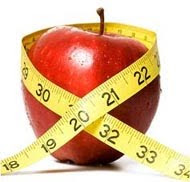
How Young is Too Young to Diagnose Depression?
Any parent can attest that the “Terrible 2’s” are a moody, temperamental time in the life of a toddler. Many kids are irritable and seem to throw temper tantrums for no reason, and some engage in more destructive behaviors like biting, hitting, and kicking themselves or others. Unfortunately, for some children, this phase lasts well beyond their third birthday. Are these kids just demonstrating the outward signs of emotional immaturity, or are they suffering from clinical depression? A new study funded by the National Institute of Mental Health and published in Archives of General Psychiatry suggests it may be the latter.
The provocative new research presents evidence that depression in preschool-aged children can be a chronic condition, not just a passing grumpy phase. The study evaluated more than 200 preschoolers, aged 3 to 6 years, for 2 years and included 4 mental health exams during the study period. At baseline, 75 children were diagnosed with major depression. This subset of children had the highest risk of subsequent depression at 12- and 24-month follow-up exams. Of the initially depressed children, 64% were either still depressed or experienced a recurrence of depression at the 6-month point, and 40% experienced continuing or recurring depression at 24 months. Nearly 20% of the children had symptoms of depression at all 4 exams.
Depression was most likely in children of mothers with depression or other mood disorders, as well as children who had experienced a traumatic event, such as the death of a parent or abuse. While most preschoolers are happy-go-lucky most of the time, depressed children are often sad and tend to play games with somber themes. A persistent lack of appetite, frequent temper tantrums, and sleep problems are also symptoms seen in depressed children. Further, excessive guilt and shame is an indicator of preschool-onset depression. Despite investigation, no evidence has shown that depressed preschoolers show developmental delays.
Treating depression in young children is controversial, though a growing number of young children are being prescribed powerful psychiatric medications. Many antidepressant medications contain warnings for adolescents, and most drugs have not been carefully examined in preschoolers. Most experts support psychotherapy as first-line treatment in children. The current study did not examine treatment in the study population.
Experts are wary of labeling preschool-aged children with depression, since the diagnostic tools for this age group are not well established. However, early identification of depression may save a child from a lifetime of social and emotional consequences. Many adolescents and adults present to health care providers for mental health treatment, indicating that their symptoms started at an early age, and most adults with depression did, in fact, meet diagnostic criteria for depression in childhood. However, if children are labeled as “depressed” so early in life, are they set up for a lifetime of medications and treatments and stigmatization?
Despite the controversy, and accuracy, of diagnosing depression in children as young as 3, new research highlights the need for communication among parents, teachers, and caregivers about a child’s emotional development. Early intervention may be the key to preventing depression later in life.
References
Copeland, W., Shanahan, L., Costello, E., & Angold, A. (2009). Childhood and Adolescent Psychiatric Disorders as Predictors of Young Adult Disorders Archives of General Psychiatry, 66 (7), 764-772 DOI: 10.1001/archgenpsychiatry.2009.85
Luby, J., Belden, A., Sullivan, J., Hayen, R., McCadney, A., & Spitznagel, E. (2009). Shame and guilt in preschool depression: evidence for elevations in self-conscious emotions in depression as early as age 3 Journal of Child Psychology and Psychiatry DOI: 10.1111/j.1469-7610.2009.02077.x
LUBY, J., BELDEN, A., PAUTSCH, J., SI, X., & SPITZNAGEL, E. (2009). The clinical significance of preschool depression: Impairment in functioning and clinical markers of the disorder Journal of Affective Disorders, 112 (1-3), 111-119 DOI: 10.1016/j.jad.2008.03.026
Luby, J., Si, X., Belden, A., Tandon, M., & Spitznagel, E. (2009). Preschool Depression: Homotypic Continuity and Course Over 24 Months Archives of General Psychiatry, 66 (8), 897-905 DOI: 10.1001/archgenpsychiatry.2009.97
























